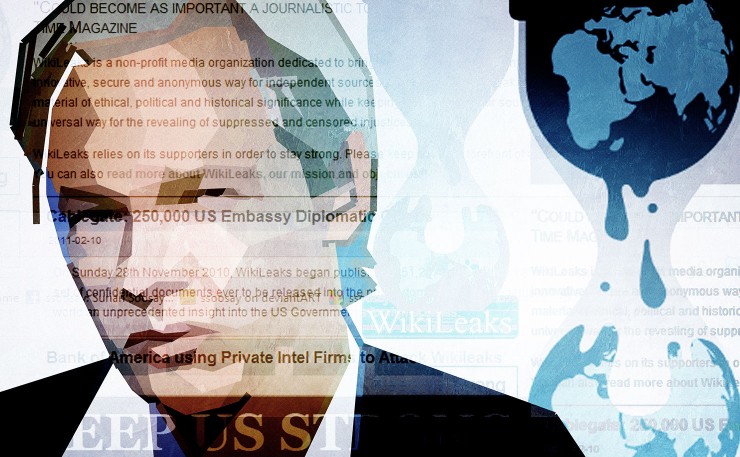Ever wonder why left wing trolls hate Julian Assange so much? And why maybe you’re more questioning? Ever tried to get to the bottom of a government-run propaganda campaign and found your synapses misfiring? The final in a five-part series by clinical psychologist Dr Lissa Johnson explains the science behind smear, and how and why it works.
Earlier this month, on March 10th, it came to widespread attention via the New York Times (NYT) that a recent explosive instalment in the Venezuela regime change narrative was false. Major news outlets had been reporting for over two weeks that forces loyal to Venezuelan President, Nicolas Maduro, had set an aid convoy ablaze, on February 23rd.
US Senator Marco Rubio immediately spread the exciting regime-change news via Twitter, announcing that Maduro must pay “a high price”, amid emerging scenes of blazing food and medicine. Other US officials echoed Rubio’s sentiments on Twitter, including National Security Advisor John Bolton, Secretary of State Mike Pompeo and the head of USAid Mark Green, calling Maduro a “sick tyrant” who uses “masked thugs” to commit “violent attacks against life saving aid”.
Clearly a little carried away, Vice President Mike Pence chimed in, gushing that Maduro “the tyrant danced as his henchmen… burned food and medicine.”
“US news stars and think tank luminaries” got on board wrote Glenn Greenwald, branding the Venezuelan president “evil” and his military “animals and criminals”. Senator Diane Feinstein called for Maduro to step down.
CNN even told its audiences that CNN reporters had witnessed the attack first hand.
The false story, reported Greenwald, “changed everything… politicians who had been…reluctant to support regime change began issuing statements now supportive of it”.
In reality, however, what occurred on February 23rd was that anti-Maduro protesters, on the same anti-Maduro side as the USA, had thrown Molotov cocktails at the aid convoy, setting it on fire.
They didn’t mean to though, according to the NYT. The flaming rag just came loose and flew in the wrong direction. Because mixing up Molotov cocktails, setting them alight, standing beside an aid convoy and throwing them could happen to anyone. (Except Maduro’s guys. If they had done it, they would still be animals).
Significantly for those interested in accurate news, a detail omitted in the NYT report is that from the very day the official lie began making the rounds, independent journalists had broken the real story.
Over two weeks before the NYT report, Max Blumenthal of the Grayzone Project posted an article, on February 24th, explaining that the “evidence pointed in the exact opposite direction” to the official narrative. The same day, journalist Dan Cohen posted a video showing an opposition protester, not Maduro’s forces, throwing a Molotov cocktail in the direction of the aid truck.
CNN, MSNBC, Fox News, PBS and the rest of the establishment media failed to run Cohen and Blumenthal’s reports. Another well-known news service did, however, giving its audiences the real scoop, from the start.
And which news service was that? It was RT.
Glenn Greenwald wrote, “Please tell me: who was acting here as lying propagandists and agents of State TV, and who was acting like a journalist trying to understand and report the truth?”
He added, “Every major war of the last several decades has begun the same way: the US government fabricates an inflammatory, emotionally provocative lie which large US media outlets uncritically treat as truth while refusing to air questioning or dissent.”
Even after the NYT story ran, the corporate media barely blinked. Yet it was the first time in 20 years that the NYT had contradicted an official regime change lie according to Mark Weisbrot of the Centre for Economic and Policy Research. Which was newsworthy in itself. (In fairness to those behind the lie, which was ham-fisted, impulsive and slightly overdone, the liars were ad-libbing. It was a fortuitous Twitter opportunity, not a plan years in the making like WMDs.)
Meanwhile, as all of this unfolded, the world’s leading source of accurate information about war, Wikileaks, came under heightened pursuit by the US government.
First, Chelsea Manning, responsible for some of the most explosive truths about recent Western wars, was sent to jail. Again. This time Manning had been imprisoned for refusing to take part in a Grand Jury investigation into Wikileaks, on the grounds that doing so violated her First, Fourth and Sixth Amendment rights. She said, “I will not participate in a secret process that I morally object to, particularly one that has been used to entrap and persecute activists for protected political speech.”

In response, 20 German members of the Bundestag stood publicly in support of Chelsea Manning, Julian Assange and Wikileaks.
On her refusal to testify, Manning noted that she had already given all relevant evidence at her court martial in 2013, adding that she was concerned about being “forced to backtrack on the truth”. Pentagon Papers whistleblower Daniel Elsberg said, “They want her to contradict her earlier sworn testimony… that she behaved in relation to WikiLeaks exactly as she would have to The New York Times or The Washington Post.”
The Grand Jury seeking to force Chelsea Manning to testify is investigating Julian Assange and Wikileaks, most likely for exposing lies about the Iraq and Afghanistan wars, based in part on Chelsea Manning’s leaks.
As outlined in parts 2 and 3 of this series, if the Trump Department of Justice (DoJ) succeeds in prosecuting Julian Assange in this way, any journalists who seek to expose the official lies and secrets of US governments had better watch out. Such a prosecution would be the first time that a publisher has been criminalised for publishing classified information. The precedent that it would set risks criminalising journalism. So say leading legal minds left and right, including current and former counsel for the NYT.
US extradition would also flout international and human rights law, including the rules of asylum. To emphasise this, the Inter-American Court of Human Rights recently issued a statement in which it “forcefully declared to Ecuador… [that]Ecuador has the international obligation not to surrender Assange” to the United States.
No doubt aware of the legal obligations and dangers, however, when he was Attorney General in 2017 Jeff Sessions declared Assange’s arrest a “priority”. On the implications for journalism in general Sessions declined to rule out prosecuting other media outlets in Wikileaks’ wake.
As CIA director, Mike Pompeo similarly confirmed that the CIA was “working to take down” Wikileaks. Pompeo added that along with Wikileaks his administration would pursue “with great vigour” other “small” media organisations.
In the latest instalment of this pursuit, Trump’s nominee for Ambassador to Ecuador, Michael J. Fitzpatrick said during his confirmation hearings that Julian Assange’s “hostile activity” was “a problem, and letting it drag on much longer would continue to harm our interests, and I believe harm Ecuador’s interests as well”.
READ THE WHOLE ASSANGE SERIES
PART 1: The Psychology Of Getting Julian Assange: What’s Torture Got To Do With It?
PART 2: The Psychology Of Getting Julian Assange: The Court Of Public Opinion And The Blood-Curdling Untold Story
PART 3: The Psychology of Getting Julian Assange – Wikileaks and Russiagate: Trust Us, We’re The CIA
PART 4: The Psychology Of Getting Julian Assange: Why Even Some Lefties Want To See Him Hang
PART 5: The Psychology Of Getting Julian Assange: War Propaganda 101
Throughout, one thing is clear. The corporate media is covering none of these issues with the focus and priority they deserve: not Manning’s imprisonment, not the ramping up of the Trump administration’s pursuit of Wikileaks and Julian Assange, not the legal implications, not the increasing support for Wikileaks from democratic and human rights organisations, nor the significance of the latest official lie in a long string of official lies supporting wars.
Perhaps the official silence stems from the fact that all of these issues converge around a simple central point, which the corporate media cannot afford to address, by virtue of their complicity. Wars need lies.
Which is a key reason the US government needs to get its hands on Julian Assange.
Mobilising populations for war
Social psychologist Kevin Durrheim and his colleagues note that when elites wish to start a war, before they can commit any violence “populations need to be mobilized because they generally don’t want war”. The psychologists quote George Creel, propagandist for the US Committee for Public Information, who said that “the ‘mind’ of the people must be mobilised [for war]as well as its man-power”.
Support for regime change, for instance, must be mustered with tales of ‘criminals and animals’ setting fire to an aid convoy. When the real story is that corporate interests want to steal a sovereign country’s oil, an alternate reality must be laid down.
Just as an alternate reality must be created when the national security state wants to shut down national security reporting and investigative journalism via Wikileaks.
In other words, propaganda is required.
Propaganda, according to Piers Robinson, Chair in Politics, Society and Political Journalism at The University of Sheffield involves “the organised, systematic and intentional manipulation of information in ways that either distorts peoples’ perception of reality or pushes them to behave in ways they would not otherwise do.” Such as supporting wars for oil.
In a 2018 book chapter, Robinson writes that propaganda emanates not only from government and corporate PR firms, but also “think tanks, NGOs, and… the so-called ‘deep state’ including the intelligence services”. (Who normally, incidentally, do a much better job than Pence et al did on the burning aid fiasco.)
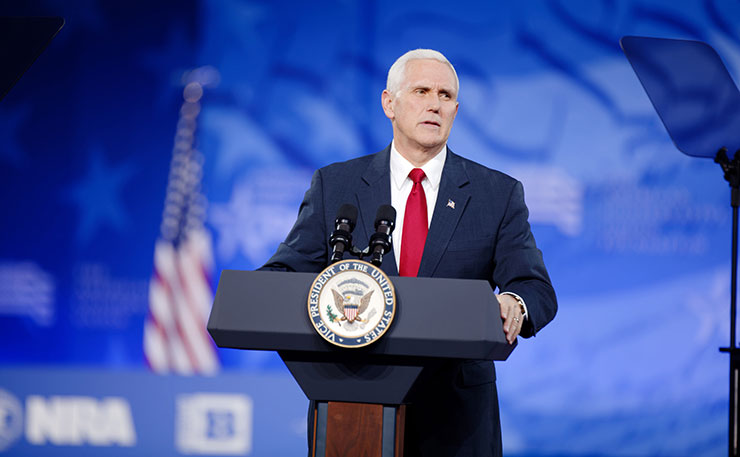
Consistent with this, in 2008, as Wikileaks came onto the media scene, the Cyber Counterintelligence branch of the US Defence Department (DoD) outlined a plan to attack the “trust” at Wikileaks’ “centre of gravity”.
How?
According to the CIA website, counterintelligence operations, such the DoD mission against Wikileaks, seek to “leverage insights” into adversary “vulnerabilities”. As noted in previous installments of this series, in the case of the war on Wikileaks, those vulnerabilities have included the vulnerabilities in the information processing systems of all human beings.
It is our own vulnerabilities, as media consumers, that have been leveraged and exploited in the counterintelligence campaign against Wikileaks, turning reality upside down such that censorship is a bastion of democracy and free speech a menace to be overcome.
In part 4 of this series I explored the motivational vulnerabilities that have been exploited in that endeavour, affecting which propaganda realities are proffered and when. In this, the final instalment, I shall explore the more technical, efficiency-oriented vulnerabilities, which are exploited in all major propaganda offensives, particularly pro-war campaigns, affecting how propaganda is deployed.
As discussed in part 4, the key motivational vulnerabilities that have been leveraged in the propaganda offensive against Julian Assange and Wikileaks have concerned system justification, or the drive to view one’s social systems as good, right, fair and just; derogation of moral advocates or the impulse to hit social critics with a shit-filled sock, to use Joseph McCarthy’s words; the motive for shared reality or to align reality-perception with those around us; susceptibility to group-based psychological processes, particularly when afraid; and the tendency to switch off and trust authorities when confused.
Psychological characteristics likely to foster such vulnerabilities include high needs for order, structure, certainty and control, low tolerance for confusion, a proneness to self-deception, concern with social image, a tendency towards group-based, us-versus-them biases, and elitist aspirations.
Conversely, characteristics fostering motivational resistance to elite narratives, such as those regarding Wikileaks and Julian Assange, are likely to involve lower needs for order, structure, certainty and control, a desire to get to the bottom of confusing stories, lower levels of self-deception, less investment in social image, a greater inclination to take others on their merits rather than viewing them in group-based terms, and less elitist aspirations.
Like all psychological characterisations, needless to say, these are approximations from which individuals will vary. No-one is a walking average of psychological research. Nevertheless, they describe broad psychological ball-parks in which motivational vulnerability or resistance to elite propaganda on Julian Assange and Wikileaks (and Russiagate) might be expected to reside.
Reality on the fly
If these are the motivational vulnerabilities fostering susceptibility to propaganda narratives on Julian Assange, what are the technical vulnerabilities? Once a narrative has been laid in motivationally receptive ground, how is it consolidated and entrenched? What tactics encourage it to take root, like watering a propaganda seed after planting?
Once propaganda narratives have been seeded, reality-processing mechanisms fostering speed and efficiency are leveraged, causing the propaganda narratives to feel ‘real’, over time, to the brain. Narratives are repeated incessantly, for example, fostering fluent processing, which the brain takes as a quick and dirty indicator of reality, or truth. Accordingly, endless repetition is a key tactic of propaganda.
In short, whereas motivational, meaning-oriented vulnerabilities determine which propaganda narratives are planted and when, technical, efficiency-oriented vulnerabilities determine how propaganda narratives are administered, deployed and maintained.
But why does the reality-processing system prioritise efficiency, often at accuracy’s expense, creating susceptibility to propaganda?
Because in order to cope with the vast quantity of information coming at us on a daily basis, our brains take shortcuts, without which our information processing systems would overload. These unconscious shortcuts often sacrifice careful, thorough, accurate processing for speed, creating ideal opportunities to hoodwink the brain.
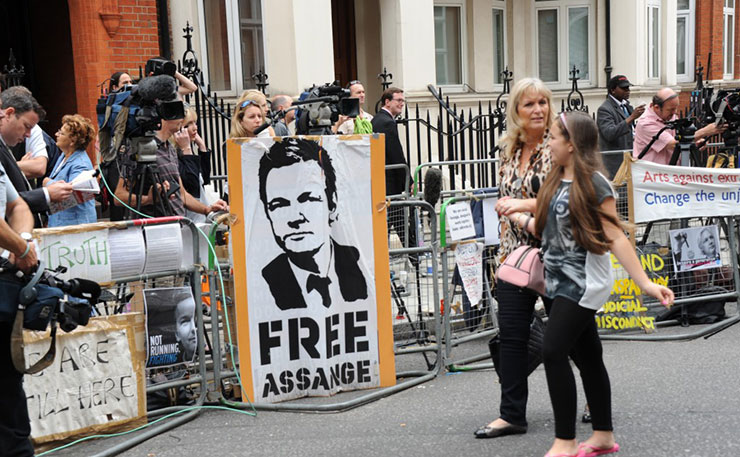
The vulnerabilities exploited at the technical level are fairly generic, reflecting built-in features of reality-processing for almost everyone, and therefore are less apt than meaning-oriented processes to differ from one person to the next.
As a result, the tactics designed to exploit technical vulnerabilities are virtually identical across propaganda campaigns, whether those campaigns support war on journalism by targeting Julian Assange, or war on a people by targeting their leader. Once you recognise the simple strategies and why they work, you are equipped to spot a serious propaganda offensive a mile away.
So if technical vulnerabilities in reality-perception are ubiquitous and generic, is everyone equally susceptible, at a technical level, to propaganda?
No. Fortunately. Despite our common vulnerabilities there are still some states of mind and circumstances that foster propaganda-resistance, even technically speaking. If you have read this far in this series (for purposes other than trolling) you likely possess such a state of mind, as shall become clear.
Meanwhile, what technical vulnerabilities have been exploited in the smear campaign against Julian Assange and Wikileaks? And how?
Pairing and tagging: a psychological bullseye
So that we can manage our enormous information load, the brain is prone to simplistically and unconsciously tagging familiar people and things “good” or “bad”. It does this using positive and negative emotions, known as affective tags. The process serves to guide our responses to objects and entities around us within milliseconds, before we have had time to even think, facilitating fluid and efficient responding.
As guides through reality, emotions have the advantage that they are extremely fast and powerful. They can exert their influence within 15 milliseconds, whereas conscious decision-making doesn’t kick in until around 1,000 milliseconds, 985 milliseconds later.
Emotions also carry a wealth of information in powerful shorthand form, alerting us immediately that something may be dangerous, unfair, suspicious, trustworthy, untrustworthy, friendly or hostile and so-on. This enables us to approach or avoid, attack or protect, abandon or assist as appropriate, before engaging in any conscious appraisal. It is an invaluable ability under conditions of high demand.
And while this arrangement may seem sub-optimal, with emotions leading the information-processing stream, and “conscious deliberation… in the wake behind the boat”, much of the time it works well. Emotion-driven processing, for instance, enables us to navigate a fluid path through the enormously complex and information-rich experience that is social interaction.
Moreover, damage to brain areas governing emotion causes deficits in problem solving, not advantages, even for problems based on probability, and even when memory, attention, learning and intelligence remain intact.
However, in propaganda, as in advertising and other forms of opinion-shaping, the brain’s penchant for pairing and tagging is readily exploited, whether to sell products, agendas or wars.
Whereas in advertising products are positively tagged, in pro-war propaganda the tagging mechanism is deployed to pin an emotional bullseye to a target’s head. The target against whom propagandists wish to mobilise for attack need simply be paired repeatedly with an emotion that supports a violent response. The most powerfully mobilising emotions in this regard are fear, rage and hate. Anger, revulsion and callousness will also do.
As has been observed by others in the wake of the horrific massacre at a Christchurch Mosque on March 15th, this very tactic has been deployed against Muslim people for years, in order to support wholesale Western slaughter throughout the Middle East.

Specifically, the emotions aroused by 9/11 and channelled into the War on Terror have simultaneously been used to tag Muslim people in general as dangerous and bad. This has been achieved by repeatedly and spuriously pairing Islam with violent extremism, pinning an emotional – and literal – bullseye on the heads of millions of innocent Middle Eastern human beings.
In psychological research, just a single news article mentioning 9/11, or warning of unspecified future Islamic fundamentalist attack drives sufficient collective angst to feed forgiveness of US atrocities in Iraq. In the real world, regularly pairing Islam with terrorism has helped to kill between 500,000 and 1.3 to 2 million people since 9/11.
The perpetrator of the Christchurch massacre departed from the social contract that is war by taking the violent response into his own hands, rather than leaving it to the state. According to the norms of war, massacres such as Christchurch are to be conducted with state-owned weapons, at the state’s discretion, in distant lands, rather than at home where the carnage will be experienced up close, for what it really is.
When the contract goes as planned, the simple strategy of pairing Islam with extremism incites enough members of Western populations to feel sufficient fear and rage, or mere callous disregard, that they look the other way while 10,000 to 40,000 Christchurch massacres are enacted throughout the Middle East, in their names.
The trouble with Wikileaks, from the point of view of war, is that it interferes with all of that, psychologically speaking. In 2010 when Wikileaks released the Collateral Murder video and the Iraq and Afghanistan War Logs, Western populations could not continue to look away.
It is difficult for propagandists to exploit the brain’s tendency towards simplistic affective tagging (we good, they bad), when Wikileaks shows Western publics the human reality of war: “the general squalor of war” as Assange described the Afghan War Diary. “The continuous small events, the continuous deaths of children.” The “thousands of potential war crimes” that constitute a war.
Similarly, video footage of US troops nonchalantly gunning down parents in front of their children, along with Reuters journalists and their rescuers, is enough to humanise targets and blast emotional holes in the most concerted propaganda effort.
And so it was, after interfering with pro-war propaganda in this way, that the secret Grand Jury investigation into Julian Assange commenced in 2010. It is the same Grand Jury that continues to this day. In tandem with that Grand Jury, an FBI-led whole-of-government operation was launched into Wikileaks in 2010, and Assange was placed on an NSA “manhunting target list”.
During the course of the investigation, in 2011 Fred Burton, then Vice President for Counterterrorism at the private security firm Stratfor, wrote, “Assange is going to make a nice bride in prison. Screw the terrorist. He’ll be eating cat food forever.”
Why? Because, according to Burton, Assange “is a peacenik”.
Should the Grand Jury get its way, and should Julian Assange face secret charges for his peacenik activity – exposing war crimes – propagandists around the world will sleep easier at night.
Because, as discussed in part 2, to sustain the pro-war propaganda narratives that feed the propaganda tags, contradictory material must be kept at bay. Across all levels of propaganda – whether motivational or technical – omission is a critical component.
Which means that Wikileaks and other independent media must be shut down if war propagandists are to do their jobs unencumbered. An isolated bit of regime-change truth in the NYT is one thing. But Wikileaks is quite another.
Unless war propagandists can maintain a monopoly on the truth, wars will not continue to rage and human beings will not be slaughtered with impunity.
Which is what a functioning plutocracy is all about.
All the better to silence you with
In order to mobilise complicity with such a project, and defend propaganda from the facts, Julian Assange has been psychologically targeted for destruction just like any other adversary. Just as Islam has been paired with terrorism, so has Wikileaks, inciting some in Western populations to look the other way while Julian Assange has been arbitrarily detained and persecuted.
In the context of Russiagate, alleged hacking has also been paired with reminders of Pearl Harbour and 9/11, seeking to directly mobilise emotions supportive of a ‘proportionate’ retaliatory response.
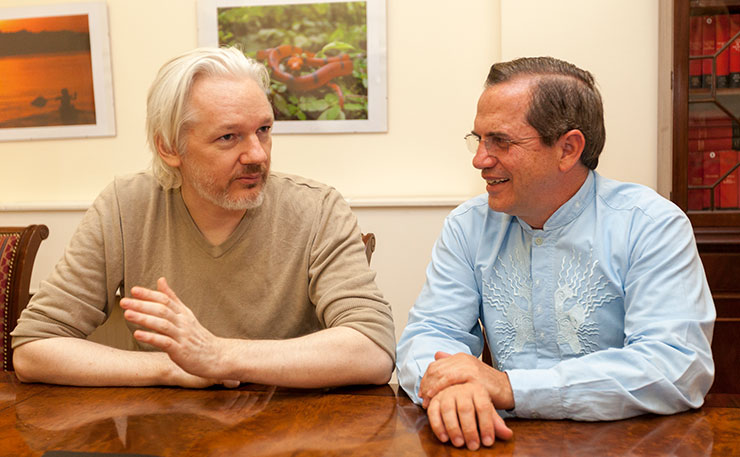
To mobilise populations for retaliation, including against “information rebellions” on the internet “battlefield”, terror and threat-based tags are invaluable. In psychological studies, fear and distress following terrorist attacks, for instance, are associated with a desire for revenge. Fear and threat also boost support for authoritarian policies, including punishment of protest and dissent. All the better to silence you with.
In the latest efforts to whip up revenge-boosting, dissent-busting fear and threat, perhaps the most blatant pairing and tagging efforts have surrounded Russia. The two-part tropes “Russian aggression”, “Russian interference”, “Russian hacking” “Russian collusion” and “Russian meddling” have circulated non-stop for nearly two full years.
The threats that Russia is depicted as posing in the underlying ‘hacked-our-democracy’ narrative concern threats to American culture, society and way of life. Psychologists call such threats symbolic threats.
Importantly for pro-war agendas, in psychological studies, groups viewed as a symbolic threat are also viewed as less human. Viewing others as less human, in turn, fosters indifference to suffering and support for violence, discrimination and abuse, including war.
As part of this process, moral disengagement comes into play, whereby “dehumanized group members are excluded from the moral community; one feels no obligation to apply moral standards that are reserved for the fully human to them.”
All the better to persecute you with. While ignoring two UN rulings based on human rights law and the Inter-American Court of Human Rights.
Given the violent, dehumanising and morally corrosive role of symbolic threat, its feverish and relentless coupling with Russia, from the moment of Trump’s election, gave Russiagate away as a propaganda onslaught from the get-go. As did the two-dimensional black-and-white cartoon-cutout Russian villain, all the better to tag a propaganda target with.
Once Russiagate was in full swing, and Russia duly tagged, the term ‘Russia’ itself became a propaganda brush with which to tar other targets, spreading the symbolic threat far and wide. During the course of Russiagate, Russia has been paired with Black Lives Matter, environmental activists, Jill Stein, progressive candidates, independent media, African Americans and Julian Assange.
Symbolic threats, the lot of them.
Which renders them all less human, less worthy, and easier to abuse, in the eyes of the propagandised.
Assange, of course, has been especially ferociously targeted by this strategy. His name has been endlessly paired with “Russia”, “The Russians”, “The Kremlin” “Vladimir Putin” and “Donald Trump” (Trump being good-as-Russian in the Russiagated mind).
Which has dehumanised Assange as a symbolic threat, making it easier, psychologically, to get away with cutting him off from the outside world and subjecting him to torture in the form of solitary confinement, possibly endangering his life according to the UN Working Group on Arbitrary Detention (WGAD).
Pairing “Julian Assange” with “Donald Trump” has also tagged Assange with a gamut of Trump-related emotions, a propaganda bonanza given the volcanic emotional outpouring following Trump’s election in 2016.
And what has been the effect? As the Mueller investigation draws to a close, with no evidence of collusion to show for nearly two years of hearings, what has it all achieved, if anything?
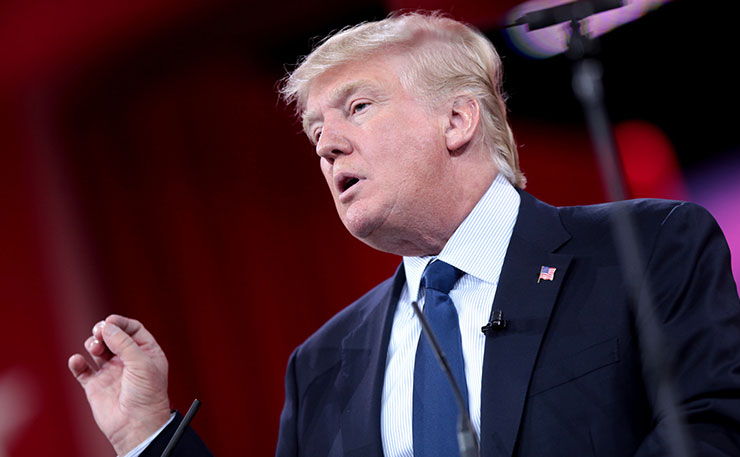
While the strategy of pairing and tagging may seem too simple to be effective, with enough repetition, and enough emotional exploitation, it works. Over time the emotions paired with propaganda targets cause propaganda narratives to feel “real” to the brain.
After 22-months of Mueller’s investigation, for example, having produced no evidence of collusion between Wikileaks, Donald Trump or Russia, but having provided 22-months worth of opportunities to say “Russian hacking”, here is what nominee for US Ambassador to Ecuador, Michael J. Fitzpatrick, was able to assert on March 13th, as though it were established fact.
Fitzpatrick alluded to ending Assange’s asylum in the Ecuadorian embassy, which would violate rulings by the UN WGAD and the IACHR, on the grounds that Assange had engaged in “hostile activities” that sought to “undermine US democracy”.
In other words, evidence or not, Fitzpatrick used two years of propaganda to argue for illegally violating Assange’s asylum, along with his civil, political, human and legal rights, and evict him from the Ecuadorian embassy. Joe Lauria, who hosts the online Unit4J vigils for Julian Assange, called the development “chilling”.
Fluency and repetition
A second cognitive weak spot in human reality-perception, which interacts with pairing and tagging, concerns fluency of processing.
In order to save time, whenever our brain offers us a ‘mental representation’ of the world, eg the world is round, our mind automatically monitors that representation for fluency. In other words, how easily, readily and automatically does it come to mind?
The more fluently the mental representation is processed (eg “Russia hacked our democracy”), the more reliable our brain deems it to be. And the more often we have encountered it before (eg “the world is round”), the greater its fluency.
Exploiting this vulnerability is behind the propaganda tactic of incessantly and repetitively pairing targets with their propaganda tags, such as Maduro with dictator and tyrant, or Russian with hacking and interference, wearing a fluency pathway in our brains, much like water eroding a gully down a hill.
Like affective tagging, monitoring mental representations for fluency takes place outside our conscious awareness, within milliseconds, before we have time to muster a conscious thought. More broadly, it is part of a process known as reality monitoring, whereby our brains automatically monitor their own reflections of the world for a range of reality-indicators, including but not limited to fluency. The whole mechanism provides a shorthand assessment of what is likely to be true and what is not.
Why fluency? Because, propaganda and advertising aside, the more we encounter the same concept repeatedly, Eg the world is round, the more likely that we can take it for granted without having to evaluate it afresh each time.
The end result is that when we hear something that we have heard a zillion times before, unless we have reason to doubt it (eg we recognise it as propaganda or we mistrust the source), it feels viscerally true, and real.
Repetition, of course, has been a feature not only of Russiagate (in spades) but of the smear campaign against Wikileaks and Julian Assange. The propaganda tags of choice, and the propaganda narratives that they represent, be it terrorist, fugitive, rapist, hostile, foreign agent, British Justice, free to leave, Trump, Putin, Kremlin or Russia, are repeatedly associated with Julian Assange, time and time again.
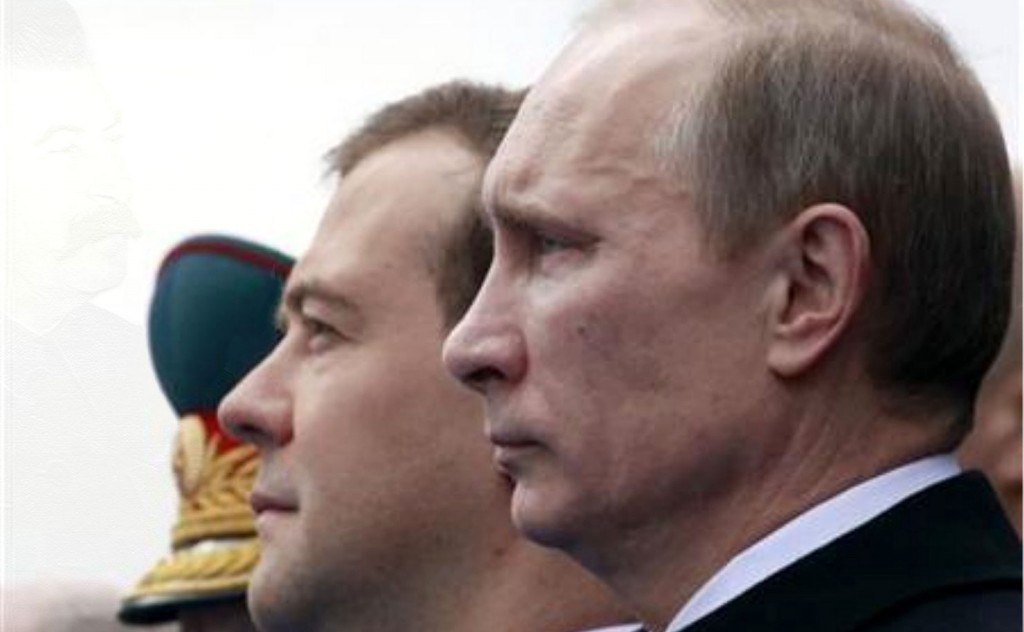
In order to facilitate repetition, excuses are tirelessly manufactured to replay the propaganda narratives justifying the terms. A central feature of Russiagate, for instance, including the alleged role of Wikileaks, has been perpetual “bombshells” that spell the beginning of the end for Donald Trump, or new “data points” in a connect-the-dots charade, creating excuses to re-state propaganda terms, and wear fluency pathways in audiences’ reality-circuits.
As relentlessly and repeatedly as they are deployed, those “bombshells” and “data points” turn to dust, proving factually wrong, irrelevant or plucked out of thin air. Their purpose, however, is not to build a case nor gather evidence or mount an argument. Their purpose, aside from confusion, is as a vehicle for repetition.
Even as reports emerge that Mueller will issue no further indictments, Russiagaters are taking the news as an opportunity to ramp up and perpetuate evidence-free propaganda narratives, as this Twitter thread amply illustrates.
Similarly, when the UK extended the Swedish investigation into Assange for four unnecessary years, it created four extra years in which to repeat the propaganda smears.
Conversely, concepts and scenarios inimical to the propaganda campaign are carefully excluded, so as to be less fluently processed, and less likely to be deemed ‘real’ by the brain. In Assange’s case, such terms include journalist, award-winning, peaceful, persecuted, arbitrarily detained, truth, public interest, media organisation, publisher and Nobel Peace Prize nominee.
After The Guardian published its front-page fabrication of an Assange-Manafort meeting, for instance, despite the story being almost instantly discredited, the paper has issued no retractions, corrections or commentary. To do so would create an unwanted opportunity for disobedient terms to compete against propaganda tags for fluency. Such as “wrongly accused”, “scapegoated”, “defamed”, “slandered”, “framed” and “innocent”.
The human face of hate
In addition to fear and threat, hate is a useful emotion with which to target enemies for destruction. Hate, however, unlike fear, requires human targets.
Whereas fear can be mobilised against any perceived threat, be it an organisation, nation or individual, hate is a more specifically interpersonal emotion.
Specific human targets with a name and a face, then, such as Julian Assange, are emotional gold to propaganda campaigns. Not only can they be paired with hate-inducing tags, but as a social species human beings are wired to feel our strongest and most passionate emotions about other human beings. This paves the way to commit war as a collective crime of passion.
When mobilising populations for regime change, for example, in addition to emotionally tagging a race, religion, nation or group, the group’s leaders are typically demonised. Emotionally laden descriptors such as “dictator”, “tyrant”, “brutal”, “authoritarian” and “regime” are paired with the leader’s name and face, over and over again. In Maduro’s case, “animal”, “evil”, “sick”, and “thug” even did the rounds.
Narratives supporting the tags are proffered, no matter how inaccurate or counterfactual, such as blaming Maduro for hardships caused by US sanctions.
Tagging the leader in this way has the advantage that it mobilises hate and vengeance of a magnitude that obscures the real targets of the war, which are the nation’s people. Intense emotions, such as those experienced towards other human beings, not only power aggressive responses but focus the mind narrowly on their target, whether a publisher or a leader to be deposed.
In an emotionally inflamed and fixated state, all else fades from view, including the thousands of living souls to be exterminated and harmed.
And thus it is with the war on Wikileaks. From rapist to terrorist to Putin’s b****, and a gamut of personal epithets in between, Julian Assange has been relentlessly paired with hate-inducing tags for nigh on a decade now. In an emotionally fixated state, those who have fallen for this tactic cannot see beyond Julian Assange to the wider world of journalism and dissent, which is under attack along with Assange.
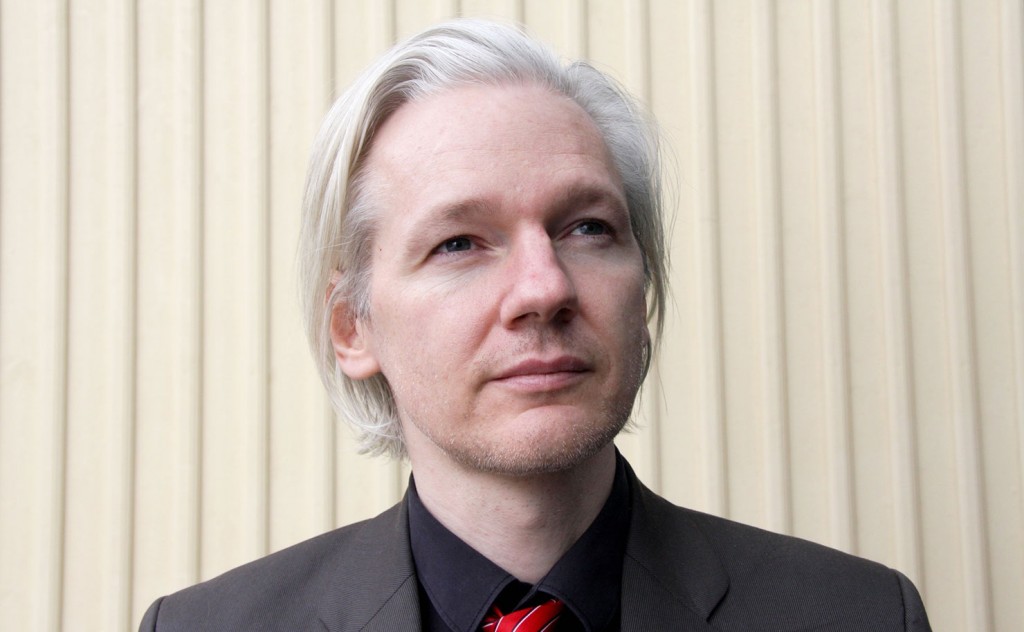
In pinning a hate-filled bullseye on Julian Assange, ‘rapist’ has been the most exploitative of pairings. Underpinning that slur has been audiences’ real and raw emotions surrounding rape and sexual assault, including trauma, helplessness, shame, horror and rage. Such real and often deeply painful feelings have been leveraged so as to tag Julian Assange “bad”. In this equation it was not only Assange who was abused, but the many people whose psychological wounds were mined for emotional material with which to tag Julian Assange.
As representatives of Women Against Rape wrote in 2012, “The authorities care so little about violence against women that they manipulate rape allegations at will… this time to facilitate Assange’s extradition or even rendition to the US.”
Manipulate rape allegations? What do they mean?
Just as the burning aid convoy in Venezuela was not what the corporate media led audiences to believe, neither was the Swedish investigation into Julian Assange. At the outset, in response to police issuing an arrest warrant for Assange, one of the women “became distraught and refused to give further testimony”. The woman at the centre of the rape allegation said in text messages viewed by Assange’s lawyers that she “did not want to accuse Assange for anything”, that “the police were keen on getting their hands on him” and that it was “the police who made up” the allegations.
According to an official statement by Stockholm’s former Chief District Prosecutor and Director of the Stockholm Regional Prosecution Authority, the investigation was irregular from start to finish. Sweden itself sought to close the investigation, only ever a preliminary one, in 2013 by interviewing Assange in the Ecuadorian embassy. The UK, however, did not agree, unnecessarily prolonging the case for another four years.
Which points to another propaganda give-away. Should you dig beneath the tag for facts, and interrogate the supporting narrative, the tag crumbles. Where a body of evidence should be you instead find sweeping claims and generalisations, perched on logically and factually shaky foundations. To discover this, one must turn to independent media.
The problem for countervailing facts and evidence swimming against a propaganda tide, however, is that once a target has been successfully paired and tagged, reality-construction becomes self-reinforcing. Emotions attached to the target foster conscious deliberation that rationalises and supports the feelings. So strong is this tendency that Professors of Political Science Milton Lodge and Charles S Taber have written an entire book on the subject, called The Rationalising Voter.
As part of the whole process, having tagged a target with an emotion, the mind becomes closed to disconfirming information. In other words a confirmation bias comes into play, whereby material that contradicts the propaganda tag is rejected by the brain.
‘That front page Guardian article linking Assange to Manafort was fake?’ Too bad. ‘Julian Assange has never been charged with any crime?’ So what. ‘The UN Working Group on Arbitrary Detention says he’s being arbitrarily detained?’ Shut up. What are you? A truther?
Propaganda resistance
Now you are equipped to spot a pro-war propaganda campaign a mile away, if you weren’t already. In short, a propaganda target is repeatedly paired and tagged, with the same emotive terms and concepts, over and over again, pinning a psychological bullseye to the target’s head.
Fear, anger, hate, callousness and other mobilising emotions are invoked. Typically, a leader is demonised. ‘Dictator’, ‘brutal’, ‘butcher’, ‘tyrant’, ‘autocrat’, and ‘regime’ fly around. (Yes there are actual brutal dictators in the world, but most of them are Western allies. Only leaders in Western crosshairs attract the title).
Dig beneath the tag and the underlying facts and narratives fall apart, leaving sweeping claims with little substance in their place. Look outside the establishment media, in alternative outlets with a history of getting the story straight, and you will find a different reality.
It’s not hard. Logically speaking.
If you have read this far, you probably know all of this already, even if subconsciously. You probably smell a propaganda rat around every war. You probably read independent media as it is, and recognise the lies.
In other words, you are probably propaganda resistant, both motivationally and technically.
Why?
What mindset confers propaganda resistance at all levels? What psychological quality fosters accuracy-oriented perception, driving media consumers to reject the repeated pairings, and dig beneath the shallow narrative to find the real story? Who is undeterred by authority figures trying to scare them off from RT and other “Russian disinformation” (ie dissenting) voices on the internet “battlefield”?
According to psychological research, it is those who are curious.
A group of researchers has found that “science curiosity”, or the desire to seek out evidence and understanding, works against biased political information processing such as propaganda. In their research the authors found that curious individuals enjoy being surprised, and therefore “expos[e]themselves more readily to information that defies their expectations… react[ing]more open-mindedly… across the political spectrum to the best available evidence.”
In a possibly related finding, political psychologist John Jost and colleagues published a paper in 2016 titled, “Are Neoliberals More Susceptible to Bullshit?” They found that “endorsement of neoliberal, free market ideology” was significantly related to “bullshit receptivity”.
So there you have it. Neoliberalism is bullshit. But the curious of the world already knew that.
The authors of the study quote philosopher Harry Frankfurt who said, “The realms of advertising and of public relations, and the nowadays closely related realm of politics, are replete with instances of bullshit so unmitigated that they can serve among the most indisputable and classic paradigms of the concept.”
The official narratives on Julian Assange and Wikileaks are no exception. They are dangerous, toxic, harmful bullshit at that. Neoliberal bullshit even.
So next time you speak out in support of Wikileaks or Julian Assange and someone hits you with McCarthy’s shit-filled sock, just remember that the sock is full of bullshit. Neoliberal bullshit. Theirs, not yours.
Shrug it off, embrace your curiosity and let your desire for understanding lead you open-mindedly across the political spectrum to the best available evidence, secure in the knowledge that your bullshit receptivity is low.
Meanwhile, if you would like to support Wikileaks and Julian Assange, in the fight to keep curiosity alive, and defy the occupation of the Western mind, you can sign the petition to the Australian government here, you can donate to Wikileaks here, and you can follow the Socialist Equality Party (SEP) of Australia’s efforts to free Julian Assange and Chelsea Manning on Twitter here, on Facebook here, and on the World Socialist Website here.
DON’T MISS ANYTHING! ONE CLICK TO GET NEW MATILDA DELIVERED DIRECT TO YOUR INBOX, FREE!
Donate To New Matilda
New Matilda is a small, independent media outlet. We survive through reader contributions, and never losing a lawsuit. If you got something from this article, giving something back helps us to continue speaking truth to power. Every little bit counts.

